Destinies intertwined
Even though Disney’s Animal Kingdom opened with plenty of hints insinuating the imminent arrival of “imagined” creatures, Beastly Kingdom never opened. But as the Passholder-exclusive plan of the entire park with Beastly Kingdom included shows, it would’ve been an entirely different Animal Kingdom.
When a fan asked at what point in the park’s design the mythological land was cut, Joe Rohde replied:
So even as Disney’s Animal Kingdom prepared for opening with those dragon and unicorn cameos throughout, it must’ve been clear that “Phase II” wasn’t going to happen. Sure, it’s often said that “good ideas never die at Disney.” But maybe we ought to zoom out a bit. After all, the “industry” has more permeable borders than most of us tend to think.
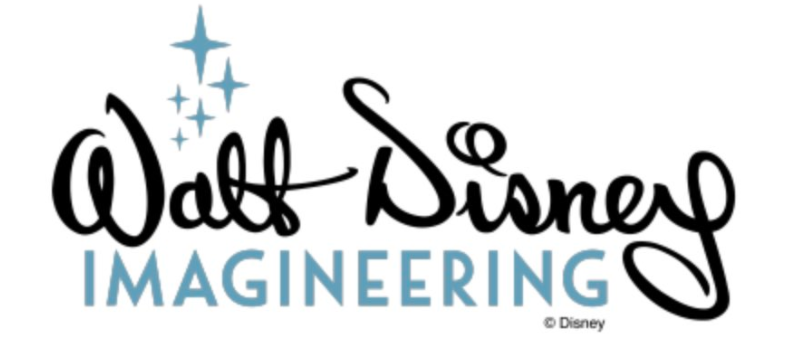
You have to remember, after all, that “Imagineering” isn’t a discipline in and of itself; it’s a collection of disciplines from scenic designers to show-writers; engineers to programmers; construction workers to architects; urban planners to botanists. Contracted firms, designers, fabricators, and installers flow from project to project.
In the mid-90s, with Disney reeling from the fallout of Disneyland Paris’ disappointing opening (and the decade of delays, closures, and cancellations that followed), Imagineers of many disciplines exited Disney with plenty of ideas to share. And if you believe the story, the concepts they’d cooked up for Beastly Kingdom didn’t make it took far off of Disney property before designers found someone who was interesed…
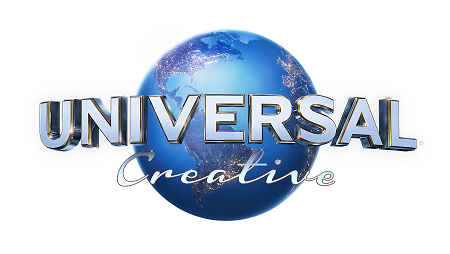
Changing Tides
So we’ve been chasing two threads there:
1. By the mid-1990s, the “studio” park concept was already showing its age, and plans for Animal Kingdom helped redefine what the next generation of parks would look (and most importantly, feel) like;
2. With Animal Kingdom deemed complete (and Beastly Kingdom officially cut from the budget), designers moved out into the world with their unused concepts in tow.
Here’s where our two plot lines seem to converge.
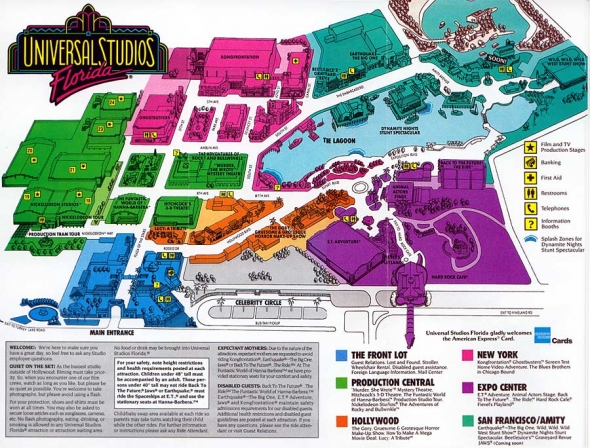
Though Universal Studios Florida had opened in 1990, it seemed doomed to be nothing more than an aside. If Universal was lucky, it could draw guests away from Disney World for a meager day trip. And to be fair, Universal didn’t try very hard to court Disney’s demographic anyway, mostly relegating its ride lineup to blockbuster disaster rides where earthquakes, apes, sharks, and dinosaurs attacked mercilessly.
And just like at the Disney-MGM Studios, the fall of the “studio” era had hurt Universal. Even less than a decade from opening, its park was feeling stale creatively and in terms of content, with rides that recalled movies from the ‘70s and ‘80s growing increasingly less “pop” to modern crowds.
But Universal had a plan.
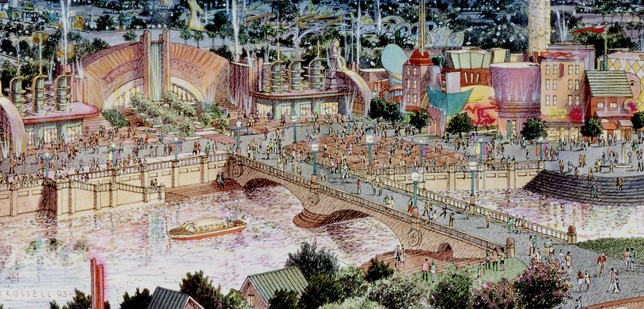
Though detractors may have been quick to write Universal off as a non-issue – fated forever to operate nothing but “studio” parks filled with boxy showbuildings and second-class dark rides – Universal’s ambitions were a little more adventurous.
They had plans to transform their single, solitary studio park into one piece of a much larger, master-planned resort. Sure, they’d add a handful of concierge-level resort hotels, a dining and shopping district of their own, and mega-infrastructure to tie it all together, but the pièce de résistance would be a second theme park.
Islands arise
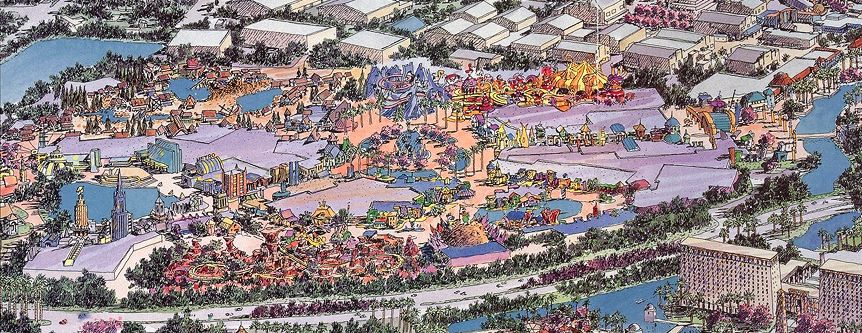
From the moment Universal Studios Florida opened in 1990, MCA had been hard at work crafting concepts for a second theme park in Orlando. It should be no surprise that Universal’s goal was to hit Disney where it hurt… hence their initial plan for a park called Cartoon World. In it, Universal would amass a world-class collection of intellectual properties, combining the Cat in the Hat, Wile E. Coyote, Batman, Dudley Do-Right, Superman, Popeye, and Bugs Bunny into one unbeatable animation-themed juggernaut.
However, a key deal with Warner Bros. (owners of DC Comics and the Looney Tunes) fell through, leaving Cartoon World with a few empty plots . Luckily the incredible success of the Lost Legend: Jurassic Park: The Ride back at Universal Studios Hollywood had proven that an entire land dedicated to Jurassic Park could be the new park’s selling point and centerpiece. Of course, that still left empty slots in the park’s lineup… but it also meant that in filling them, Universal’s second gate wasn’t beholden to cartoons anymore…
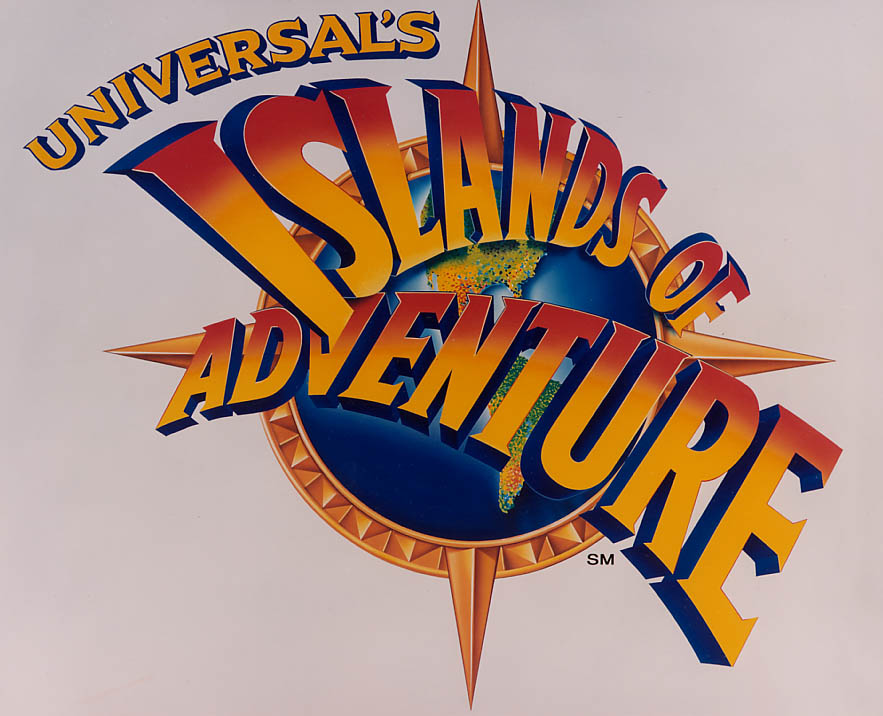
That’s why industry insiders say that, in some sense, Universal’s Islands of Adventure was dreamed up, designed by, and built by Imagineers who’d fled Disney’s cost-cutting ways. And in this second gate for Universal, they would prove what they could do with a little faith and trust… no Pixie dust required.
In Islands of Adventure, Universal would dispense entirely with the cop-out “studio” style, soundstages, lighting rigs, and behind-the-scenes motif. Their second gate would meet, match, and – in places – exceed Disney’s standards, crafting immersive, cinematic themed lands. And rather than relying on classic or contemporary movies, this new theme park would invite guests to step into something much more timeless and powerful: stories. They’d become explorers thrust into the adventure, action, comedy, thrill, wonder, and whimsy of books, comics… and legends.
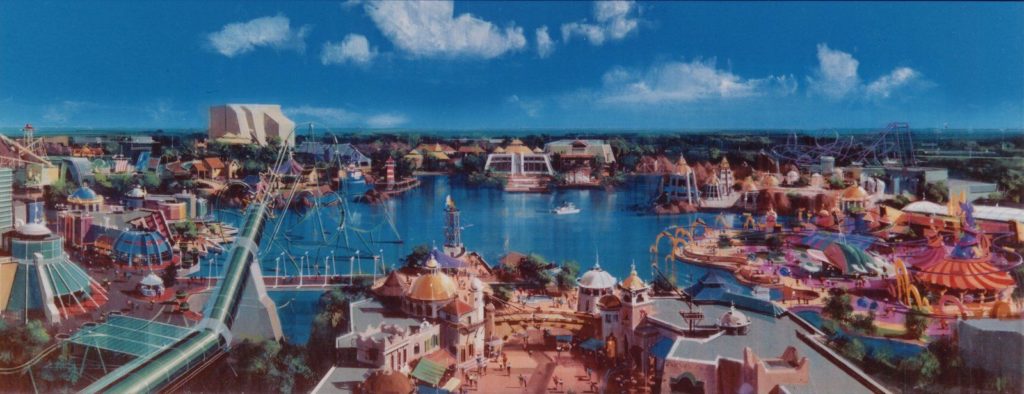
With nautical ports themed to Marvel super heroes, Jay Ward’s Sunday funnies, Dr. Seuss’ evergreen children’s stories, and Jurassic Park, Islands of Adventure invented the “IP” park with its intentionally-juxtaposed “islands” situated around a central lagoon, “flashing” guests between worlds, stories, and genres like jump cuts. Endlessly adaptable, Islands of Adventure feels fittingly “classic,” “current,” and “forward-thinking” all at once. (And unlike the parks Universal has built since which borrow the “Islands” style but the “Studios” substance, the park has proven spectacularly evergreen retaining nearly all of its opening-day original rides.)
And as for those new ideas that flooded in once Cartoon World’s animation requirement went away and Disney designers found their way north?
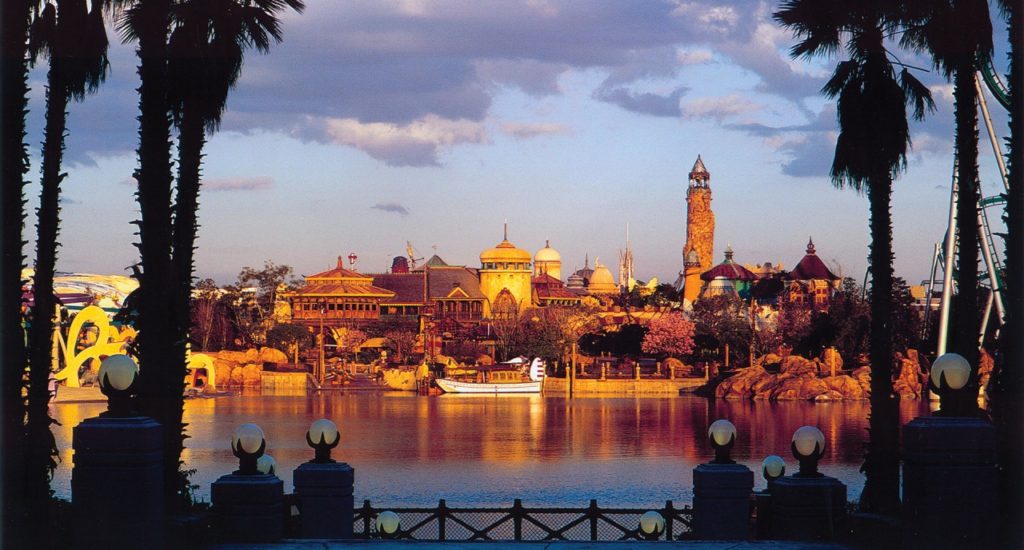
It must begin with Port of Entry, the custom-crafted “Main Street” equivalent for the park (coincidentally, home to the parks own short-lived in-park transportation ride – the Island Skipper Tours, connecting Port of Entry and Jurassic Park – which closed under similar conditions to Animal Kingdom’s Discovery River Cruise the same year!). A kinetic seaside trader’s market of windchimes, waterfalls, and seagulls, the land is designed to resemble a port constructed of all the world’s cultures coming together as one… a village of minarets, huts, pagodas, cathedrals, Norse chapels, and temples, all reigned over by the park’s icon, the Pharos Lighthouse.
This sensational, mystical marketplace is the perfect launching point for a park dedicated to adventure, exoticism, and dissimilar parts coming together as one… But even it wouldn’t be the landmark creative icon of a new, 21st century park… So what was?
The Lost Continent
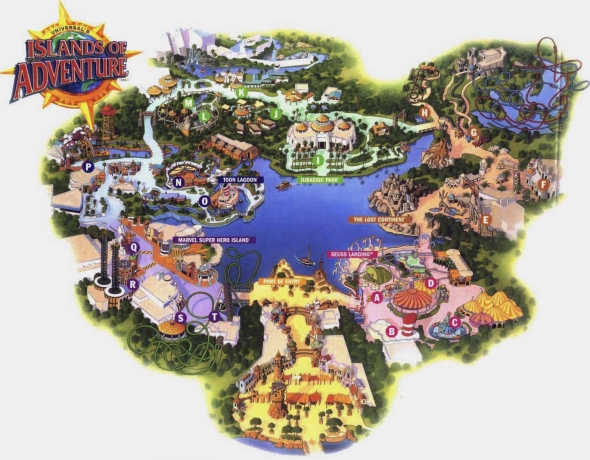
Seuss Landing, Marvel Super Hero Island, Toon Lagoon, and Jurassic Park each bring to life the stories, settings, characters, and adventures we recognize from picture books, comic books, the Sunday funnies, and feature films. But the sixth land at Universal’s Islands of Adventure was a bit different.
As you leave the whimsical waves of Seuss Landing behind, a bridge over an arm of the Great Sea appears ahead. It’s made of dark wood bolted with metal rivets and chains – a distinct departure from the curving, cartoon world of the Sneeches. And across that bridge stands a stone sentry: an unusual creature with the head and wings of an eagle, the gripped claws of a lion, and the coiled, scaled tail and fins of a fish. A flaming torch embedded in the guardian’s pedestal draws the eye to this unique land’s name: The Lost Continent.
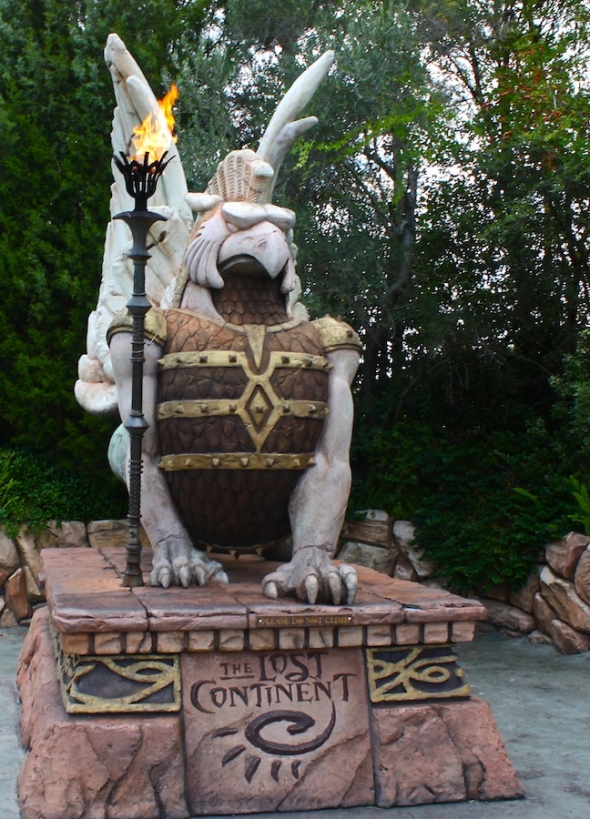
Uneven planters made of red rock spill over with wild plants and shrubs that give a decidedly untamed look to this entry plaza. But now, the path curves to the left. The Lost Continent is divided into three distinct realms of legend, and the path from Seuss Landing leads to an amazing sight in the first.
Are you ready to experience the three fantasy realms of The Lost Continent? Our walkthrough begins on the next page…



